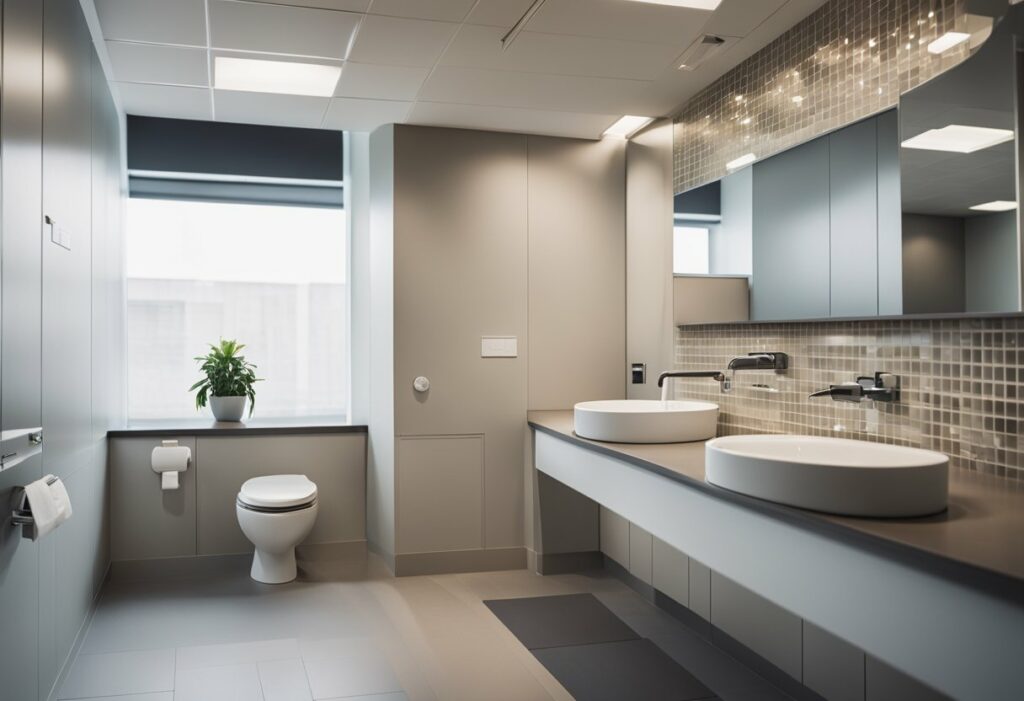Gender Neutral Toilet Design: Creating Inclusive Spaces for All
Gender neutral toilets are becoming increasingly popular in public spaces due to the need for inclusivity and equality. These toilets are designed to be accessible and usable by any gender group, regardless of their gender identity. They provide a safe and comfortable space for people who do not identify as male or female, as well as for those who prefer a more private and individual experience.
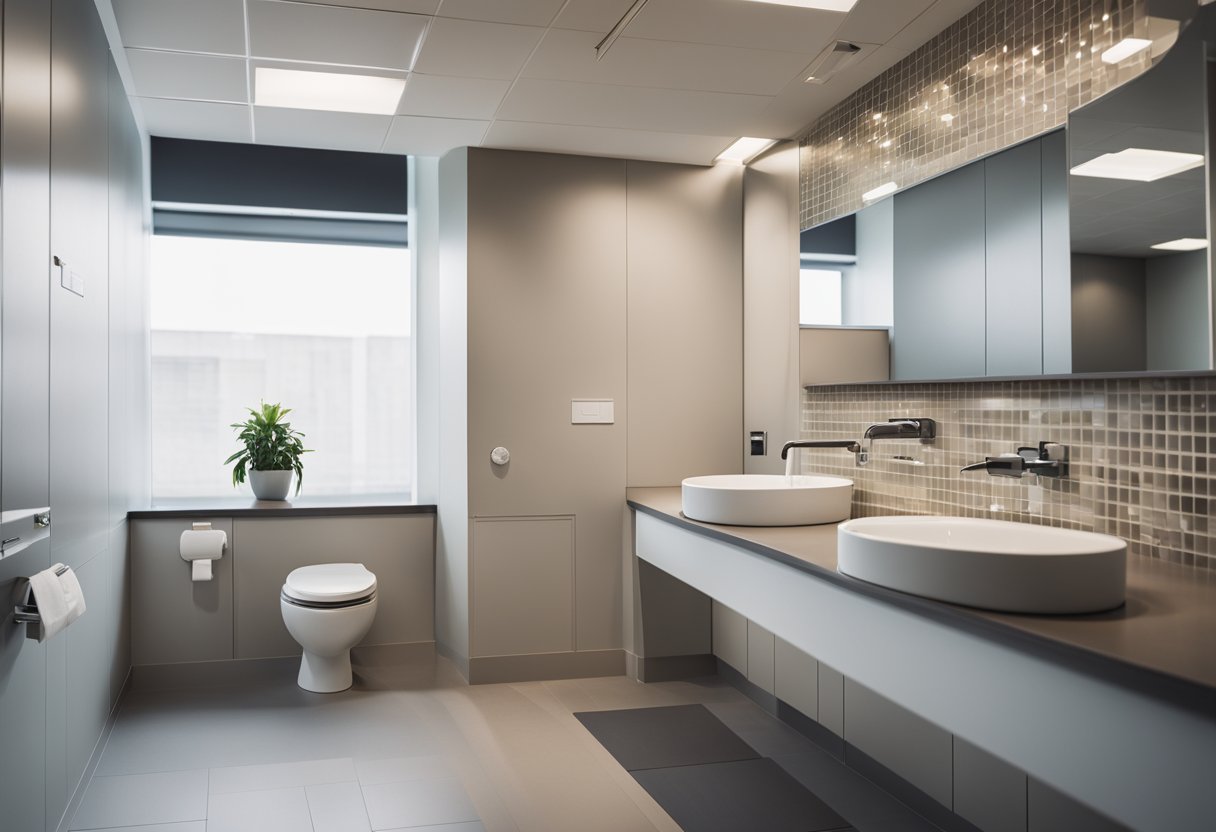
Design fundamentals for gender neutral toilets include creating a space that is welcoming and non-discriminatory. This means that the design should not be focused on any specific gender, but rather on creating a space that is comfortable and functional for everyone. Some of the key design elements include privacy, accessibility, and safety. Privacy can be achieved through individual stalls that are fully enclosed and equipped with locking mechanisms. Accessibility can be achieved through the use of wider doors, grab bars, and other features that make the space easier to navigate for people with disabilities. Safety can be achieved through the use of well-lit spaces and security measures that ensure the safety of all users.
Key Takeaways
- Gender neutral toilets are becoming increasingly popular in public spaces due to the need for inclusivity and equality.
- Design fundamentals for gender neutral toilets include creating a space that is welcoming and non-discriminatory.
- Some of the key design elements include privacy, accessibility, and safety.
Design Fundamentals for Gender Neutral Toilets
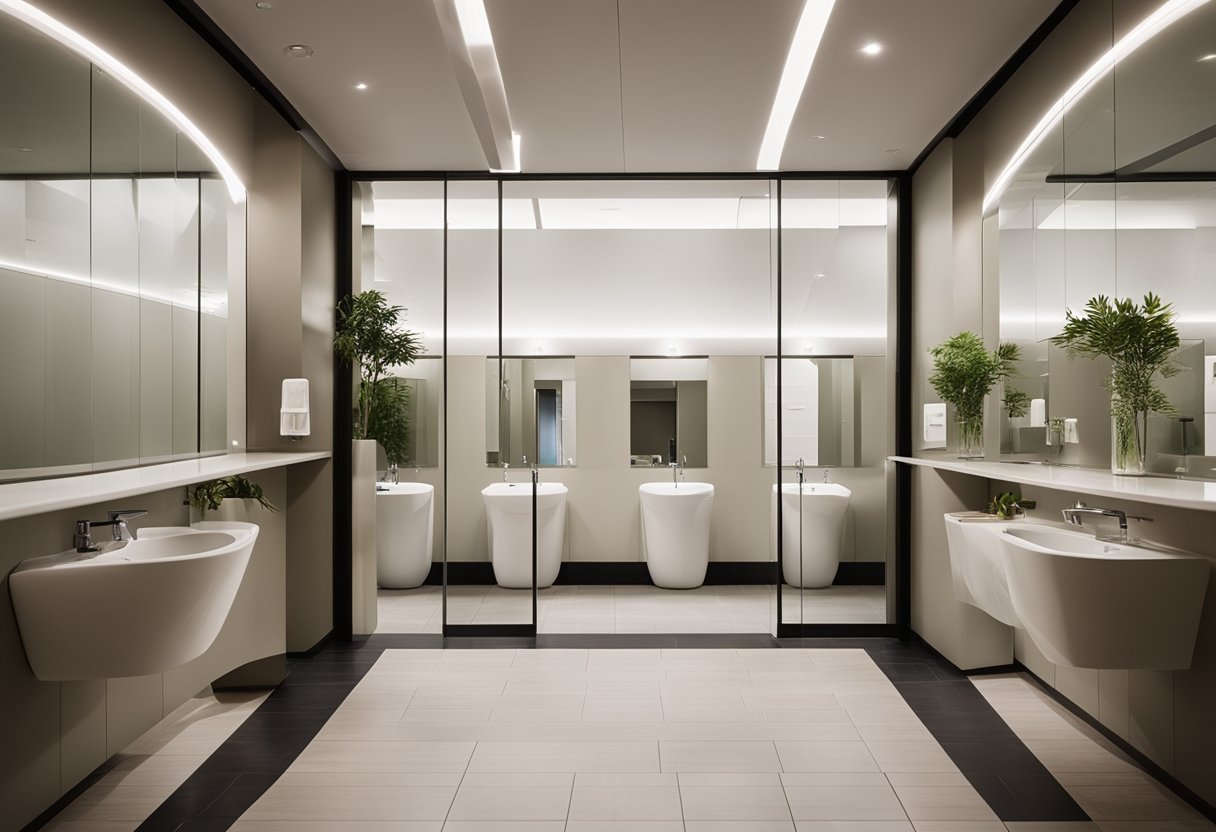
As architects, designing gender-neutral bathrooms requires a deep understanding of the social equity issue surrounding toilet design. Gender-neutral toilets are an inclusive solution that can help ensure everyone feels safe and comfortable using public restrooms. In this section, we will discuss the key design considerations and compliance with building codes when designing gender-neutral toilets.
Understanding Gender Neutral Toilets
Gender-neutral toilets are designed to be used by people of all genders, regardless of their gender identity. They are a safe and inclusive solution that provides privacy and comfort for all users. The design of gender-neutral toilets should prioritize privacy and safety, while also being accessible to people with disabilities.
Key Design Considerations
When designing gender-neutral toilets, there are several key design considerations to keep in mind. Firstly, it is important to ensure that the layout provides privacy to users. This can be achieved by using floor-to-ceiling partitions, or by designing individual stalls with lockable doors. Additionally, it is important to ensure that the toilets are accessible to people with disabilities, by providing wheelchair-accessible stalls and grab bars.
Another key consideration is the use of signage. Gender-neutral toilets should be clearly marked with non-gendered signage, such as “Restroom” or “Toilet”. It is also important to ensure that the signage is visible and easily identifiable from a distance.
Compliance with Building Codes
Designing gender-neutral toilets also requires compliance with building codes, such as the International Plumbing Code. The code requires that all single-occupancy toilets be gender-neutral, and that they provide privacy to users. It is important to ensure that your design meets all code requirements to ensure compliance and safety.
In conclusion, designing gender-neutral toilets requires a deep understanding of the social equity issue surrounding toilet design. By prioritizing privacy, safety, and accessibility, and complying with building codes, architects can design inclusive and safe gender-neutral toilets that are comfortable for all users.
Inclusivity and User Experience
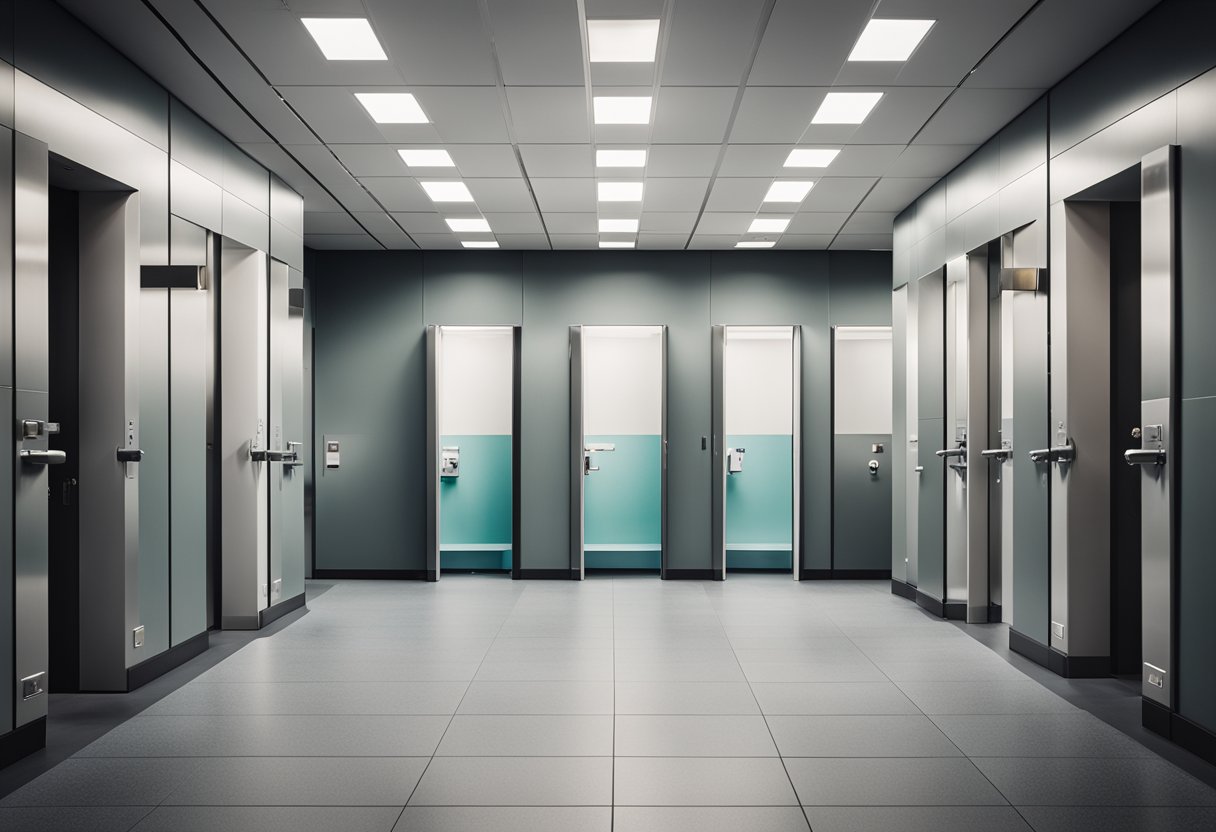
Designing gender-neutral restrooms is not only about providing an inclusive space for transgender and non-binary individuals, but also accommodating diverse needs, ensuring safety and privacy measures, and effective signage and communication.
Accommodating Diverse Needs
Inclusive bathrooms should be designed to accommodate diverse needs, including those with disabilities, parents with children, and individuals with different gender identities. For example, installing grab bars, accessible sinks, and changing tables can make the space more accessible for people with disabilities or parents with children.
Safety and Privacy Measures
Safety and privacy are important considerations when designing gender-neutral restrooms. To ensure safety and privacy, the restroom should have individual stalls with lockable doors and floor-to-ceiling partitions. The restroom should also be well-lit and have clear lines of sight to prevent harassment or other unsafe situations.
Signage and Communication
Effective signage and communication are essential for creating an inclusive restroom. Clear and visible signage should indicate that the restroom is gender-neutral or all-gender. Additionally, the restroom should have clear instructions on how to use the facilities, such as how to operate the flush mechanism or how to dispose of sanitary products.
In conclusion, designing an inclusive bathroom requires careful consideration of diverse needs, safety and privacy measures, and effective signage and communication. By creating a welcoming and inclusive space, gender-neutral restrooms can provide a comfortable and safe environment for all individuals.
Frequently Asked Questions
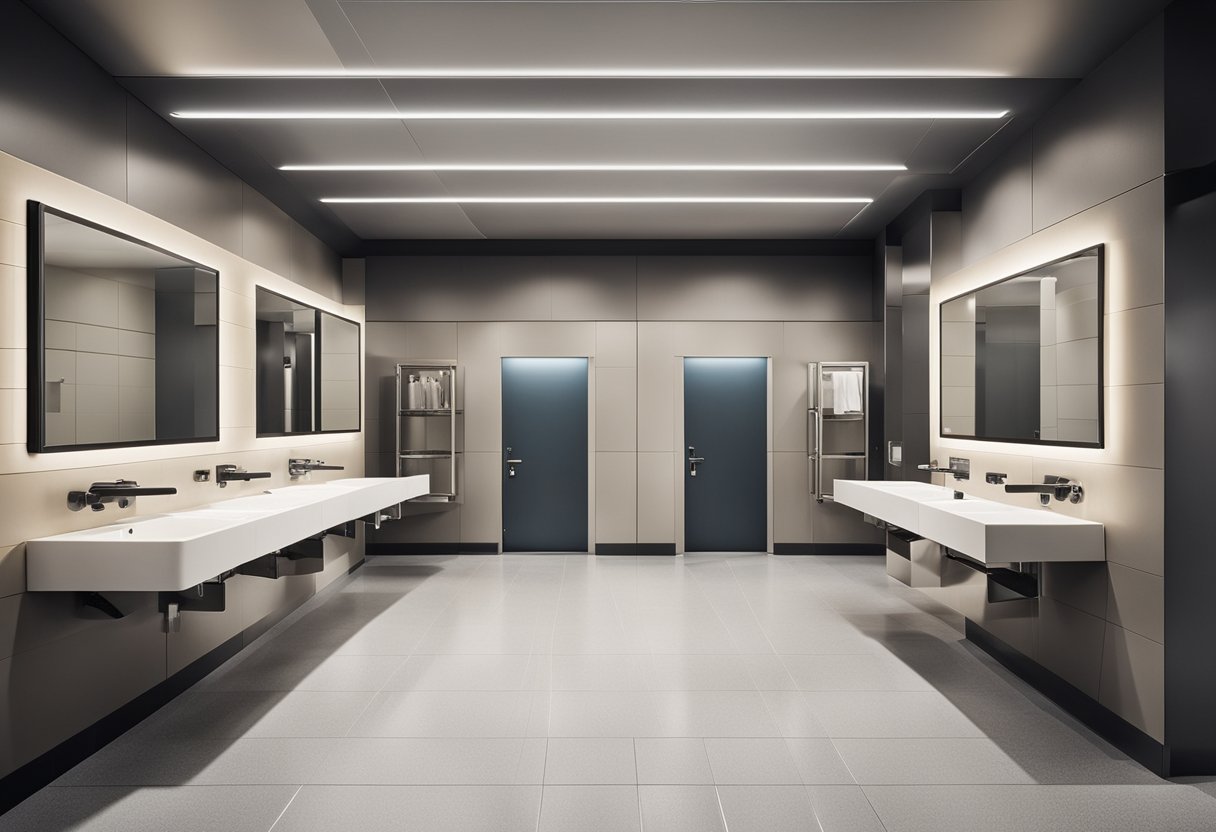
What are the top considerations for creating exciting and modern gender-neutral toilets?
When designing gender-neutral toilets, it’s essential to consider accessibility, privacy, and comfort. The layout should be spacious, with ample room for manoeuvring. The toilet cubicles should be private and include features such as floor-to-ceiling partitions, full-length doors, and lockable doors. Additionally, incorporating natural light and ventilation can enhance the overall experience.
How can we maximise space in small gender-neutral toilet facilities?
In small gender-neutral toilet facilities, it’s crucial to maximise the available space by using compact fixtures and fittings. Wall-hung toilets and urinals can save floor space, while slimline washbasins and hand dryers can reduce the footprint of the facility. Additionally, using clever storage solutions such as recessed shelves and cabinets can help keep the space clutter-free.
What design features contribute to the best gender-neutral toilet experience?
The best gender-neutral toilet experience is one that is inclusive, safe, and comfortable. Design features that contribute to this experience include gender-neutral signage, private cubicles, accessible facilities, and adequate lighting. Additionally, incorporating natural materials and finishes can create a warm and inviting atmosphere.
What are the common challenges faced when implementing gender-neutral toilets?
One of the common challenges when implementing gender-neutral toilets is resistance from some users who may feel uncomfortable or unsafe sharing a bathroom with someone of a different gender. Another challenge is ensuring that the facilities are accessible to all users, including those with disabilities. Additionally, retrofitting existing facilities to accommodate gender-neutral toilets can be costly and challenging.
How do gender-neutral toilet signs effectively communicate inclusivity?
Gender-neutral toilet signs should be clear, concise, and easy to understand. The use of gender-neutral symbols and colours can help communicate inclusivity and avoid confusion. Additionally, including text such as “All Gender Restroom” or “Gender-Neutral Toilet” can help clarify the purpose of the facility.
What are the leading arguments for and against the adoption of gender-neutral toilets?
The leading argument for the adoption of gender-neutral toilets is that they promote inclusivity and accommodate the needs of all users, regardless of gender identity. Additionally, gender-neutral toilets can help reduce waiting times and increase efficiency by allowing multiple users to access the facility simultaneously. The main argument against the adoption of gender-neutral toilets is that some users may feel uncomfortable or unsafe sharing a bathroom with someone of a different gender. Additionally, retrofitting existing facilities to accommodate gender-neutral toilets can be costly and challenging.

